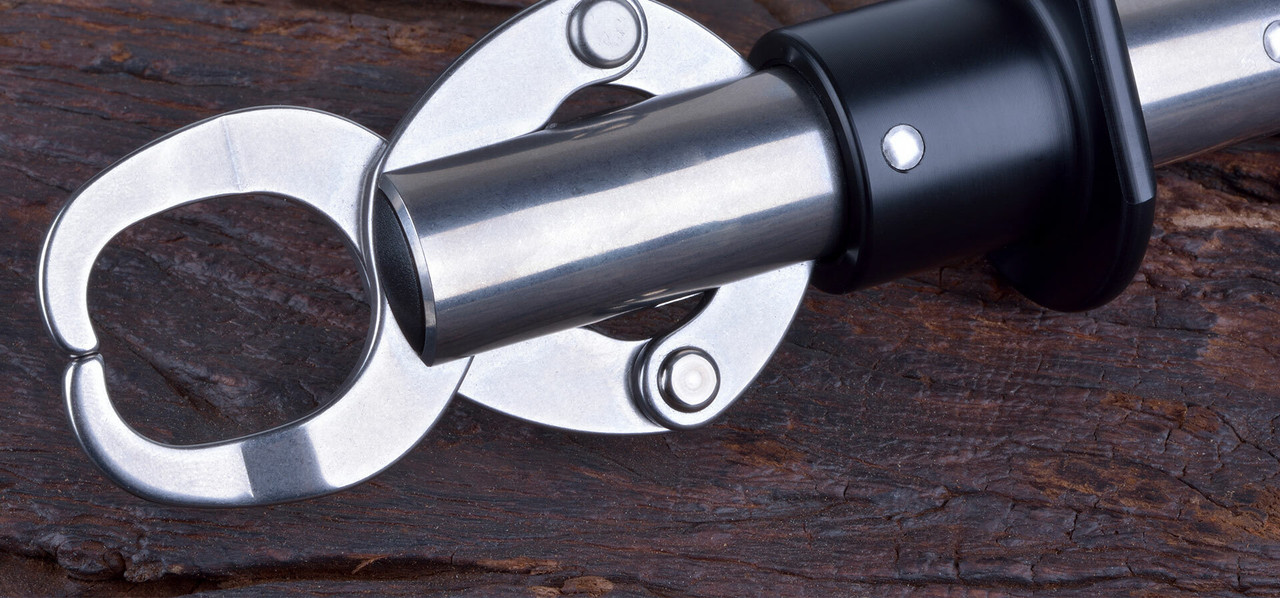A Tackle Shop Guide to Fish Lip Grippers
A fish lip gripper, or lip grip, is a beneficial accessory for any modern lure or bait angler. But with different styles, materials, and features to choose from, it's important to understand the key differences. This guide will break down what you need to look for to choose the perfect set of lip grippers for your fishing style.
A Note From Our Local Experts
"I think most of us have been there—you try to handle a flathead and end up with cuts on your hands from its sharp gill rakers and spines, or you try to grab a thrashing bass and end up with a treble hook embedded in your hand. I've certainly been there on both counts, and the treble hook incident ended with a trip to the hospital.
Lessons are learnt, and it's the reason I’ll always carry a lip gripper in my boat or backpack now. The real benefit is control. When you have a secure hold on the fish's jaw, it tends to calm down, and that gives you the time and space to remove the hooks cleanly and safely. It's a simple fishing accessory that makes a huge difference when dealing with the fish you land."
- Ben Czulowski, Owner, Fishing Tackle Shop (Ocean Storm) | 20+ Years in fishing
Choosing Your Lip Grips: Plastic vs. Metal
The first decision comes down to a trade-off between weight, durability, and features.
✔
Plastic Lip Grips: These are lightweight, affordable, and 100% corrosion-proof. Many models also float, which is a massive advantage for kayak and wading anglers. They are the perfect all-round choice for the vast majority of inshore species.
✔
Metal Lip Grippers: Built for strength and longevity. A quality set of stainless steel lip grippers offers superior power and durability for handling very large, powerful fish. Many premium metal models also come with the added benefit of built-in scales for weighing your catch.
Pro-Tips for Using Lip Grippers
- The Golden Rule for Catch-and-Release: This is the most important tip. Never hold a heavy fish vertically by its jaw alone, as this can cause serious injury. Always use your other hand to support the fish's body horizontally while using the lip grip to control the head.
- Keep Them Clean: After every trip in saltwater, give your lip grips a thorough rinse with fresh water, paying special attention to any hinges, springs, or scale mechanisms to wash away salt and prevent them from seizing up.
- Use a Lanyard: A simple lanyard attached to your lip grips and your belt or kayak is the cheapest insurance you can buy. It will prevent you from losing your tool overboard when you're dealing with a thrashing fish.
Frequently Asked Questions
Do lip grippers harm the fish?
When used correctly, no. The key is to never support the full weight of a heavy fish by its jaw. Always use your free hand to support the fish's body horizontally. Used this way, a lip gripper is a fantastic tool that allows for quicker, less stressful hook removal, which is much better for the fish's welfare.
What kind of fish are lip grips most useful for in Australia?
They are most useful for species that are difficult or dangerous to handle. This includes fish with sharp teeth (like tailor, mackerel, and flathead), sharp spines (like bream and estuary perch), or those that are just incredibly slippery and powerful (like barramundi and mulloway).
Can I weigh a fish with any lip gripper?
No, only specific models are designed for this. If you want to weigh your catch, you need to choose a set of metal lip grippers that has a set of scales built directly into the handle. Standard plastic models do not have this feature.
Are floating lip grips really a big advantage?
For any angler fishing from a kayak, a float tube, or while wading, yes, it is a massive advantage. Dropping your gear is almost inevitable in these situations, and having a pair of lip grips that will float on the surface instead of sinking to the bottom can be the difference between a minor inconvenience and losing your tool for good.



